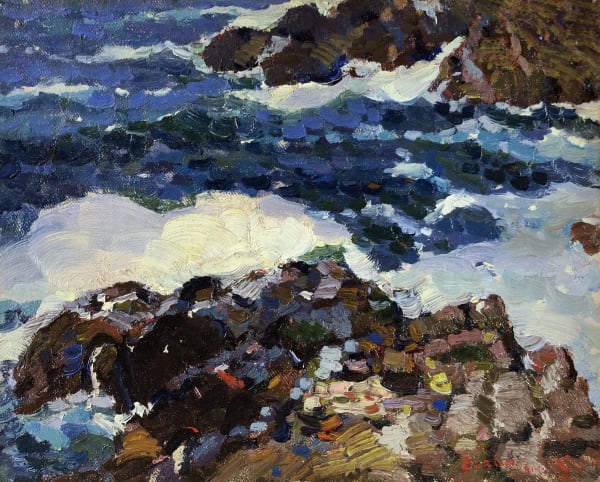Paul Burlin 1886-1969
We don’t give art a chance because it needs leisure and thought. However, we shouldn’t be too intellectual about it because it is more interesting than that.
- Paul Burlin
Born in New York City, Paul Berlin was a Social Realist for most of his career, influenced at first by the Ashcan School and later by Cubism. His early art education was at the National Academy of Art and the New York Art Students League from 1900 to 1912. In New York City, Burlin was a frequent visitor of Alfred Stieglitz's 291 Gallery, and there he was drawn to Picasso's "primitive" artwork, which further led him to study the art and culture of the Southwest Pueblos. Burlin first visited New Mexico in 1910, and the paintings from his visit were received with great critical success in New York City. As a result of this early success, he was the youngest artist (at 26 years old) to participate in the famous 1913 Armory Show.
Burlin continued to visit the Southwest, and in 1917 married Natalie Curtis, a woman from New York who had studied in Europe and who subsequently lived in New Mexico and Arizona, devoting herself to preserving the culture, language and traditions of Native Americans. Curtis and Burlin lived in Santa Fe, but in 1921, Curtis, age 46, was killed in Paris by an automobile when she and her husband were in Paris attending an International Congress on the History of Art.
Burlin taught at the Art Students League Summer School in Woodstock, New York after it was re-established, following World War II, in 1947. He was a member of the American Congress of Artists and was active in the Provincetown Art Colony. He taught at the Colorado Springs Fine Art Center, the University of Wyoming, and Washington University in St. Louis. A fellow of the MacDowell Colony, in Peterborough, New Hampshire, Burlin was represented in an exhibition in 1997, "Community of Creativity: A Century of MacDowell Colony Artists," that traveled from the National Academy of Design, New York City, to the Wichita Art Museum, Kansas. In 1962, the Whitney Museum of American Art, New York City, held a retrospective exhibition of Burlin's work.
Collections include the Museum of Modern Art, New York City; Whitney Museum of American Art; Provincetown Art Association and Museum, Massachusetts; and the Museum of New Mexico, Santa Fe.


